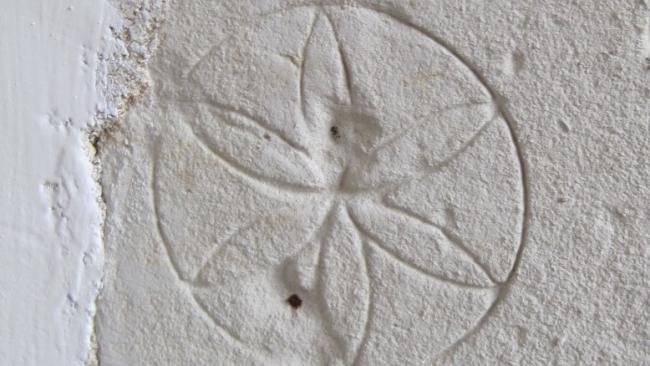
College Archivist publishes survey of graffiti at Jesus
Jesus College Archivist, Robert Athol, has revealed the results of a year-long project, ‘Students and symbols: a survey of graffiti at Jesus College, Cambridge’, in Post-Medieval Archaeology.
Between December 2016 and February 2018, Robert conducted a detailed survey of graffiti around the College. Though graffiti is increasingly being studied as a form of historical evidence, the majority of existing surveys have taken place in religious rather than secular buildings. Robert’s survey is the first of its kind at a Cambridge or Oxford College, with their unique hybrid of domestic and institutional architecture.
Robert found over 1000 pieces of graffiti, dating from the 16th to late 20th centuries, of which 482 included names or initials. Other findings include religious symbols, apotropaic (ritual protection) marks, and multiple instances of signatures from members of the same family who both studied at Jesus. The oldest dated piece, which reads ‘Jasper Baker 1596’, was found in the bell tower of the College Chapel. Two carvings of the College crest appear in separate locations, and a cupboard in the Master’s Lodge appears to have been constructed entirely from heavily graffitied medieval panelling in the nineteenth century.
Robert said, "This survey explores an important part of College history that has been there, literally in plain sight, but has been previously overlooked. As well as an immediate understanding of the markings themselves (such as names of students, symbols to protect against perceived malevolent spirits, knife sharpening marks), we get a fantastic insight into the interactions between those inhabiting the College and their surroundings from the 16th-19th centuries.
“My favourite examples are probably all the figurative graffiti, particularly the one that appears to be a woman holding hands with a young boy (possibly early 17th century based on the woman's costume). I also like the instances of names written together that perhaps indicate friendships or relationships that are not likely to have been recorded or survived in documents.
“In time, once further indexing and cataloguing work has taken place in the Archives, cross-checking of information from the archives and the graffiti survey can potentially lead to further discoveries about College history. Perhaps the most significant of these would be a retrospective room register. From such a project, we could learn more about how the college organised accommodation for its inhabitants, whether along geographic, social or economic lines, over a period spanning hundreds of years.
“It was great fun carrying out the survey and I am so grateful to everyone in College who helped by giving me access to their rooms and areas in College not usually accessible, as without that support it wouldn't have been possible to carry out the survey and make such fantastic discoveries.
Robert hopes that his survey will inspire similar projects at other historic universities and Colleges. A team of student volunteers is currently indexing the accounts held in the College Archives, a project that may take up to seven years to complete. Crosschecking between this data and the surveyed graffiti may help to create the retrospective room database, and reconstruct the spatial politics of the social hierarchies in past College communities.
You can find out more about the College Archives on our website, and follow Robert’s work on Twitter (@JesusArchives), where he features a new piece of College graffiti each week. ‘Students and symbols: a survey of graffiti at Jesus College, Cambridge’ is available to read online now.





